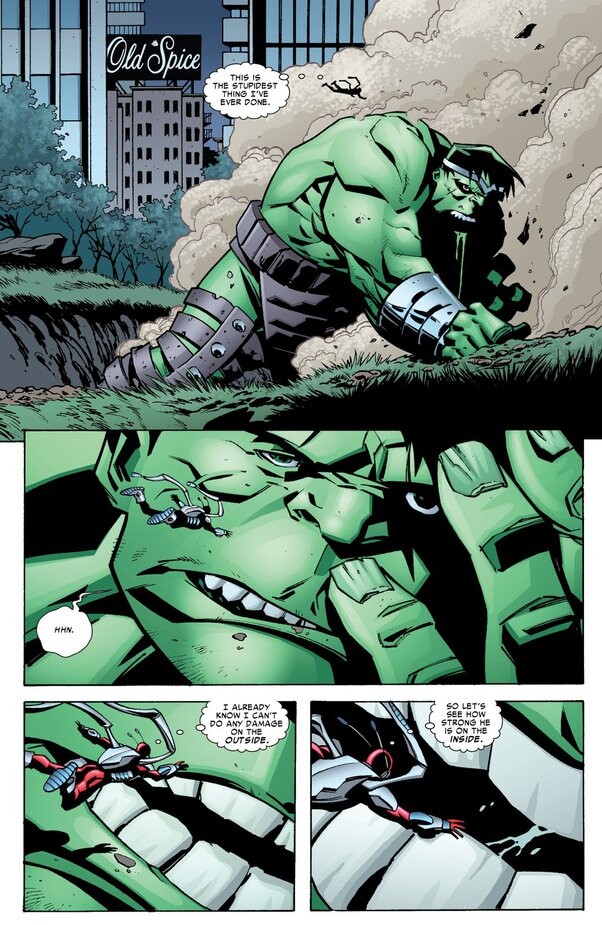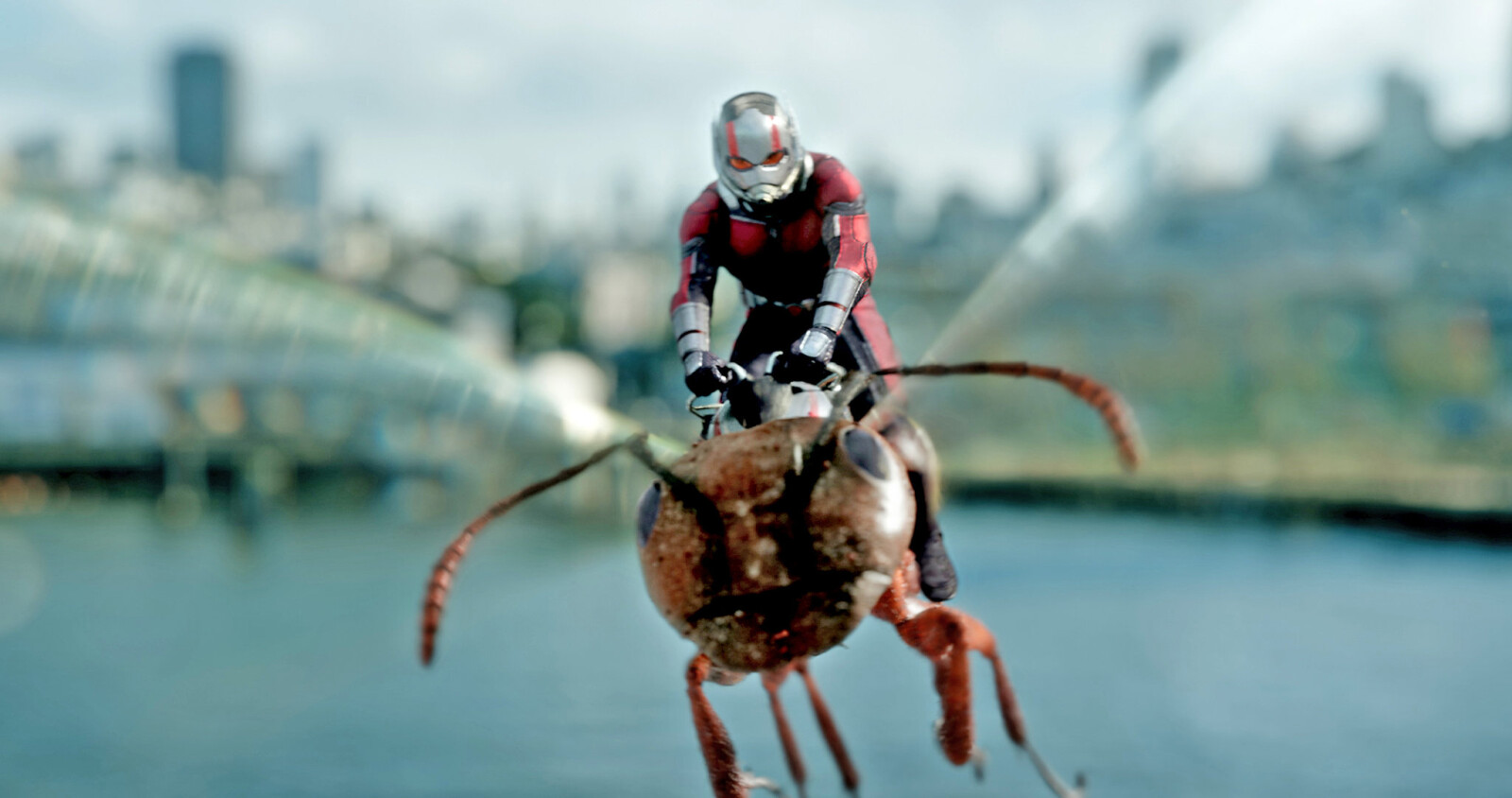4 Questions About Superhero Powers (Explained By Science)

Creating superheroes is pretty great. You can just close your eyes, think about literally any ability that would be super awesome to have, et voilà! You have a character that can fly using the force of their own farts.
Or, you know, some other fancier scientific explanation, because the fun thing about superheroes and multiverses and time travel and whatnot is that even though they’re not necessarily real in the sense of Earth’s physical laws, most all of them are still somehow rooted in the science and scientific theories of our universe. Except for maybe King Shark. What the what is that guy even? Anyway, here are four more questions about superheroes and their powers that can at least be explained in a way that is not just “sky god magic.”
How Does Thor’s Hammer Work?
Don't Miss
It’s been a contentious debate turned into a long-running MCU joke: Who can pick up Thor’s hammer, and why? How can a chunk of metal possess the ability to deem a person worthy other than the oversimplified answer of “the comics says so?” Not to mention that the most powerful hammer in the MCU seems to bestow that “worthy” title on anyone from Loki to a superhero whose special power is talking to squirrels.

“The Unbeatable Squirrel Girl Beats Up the Marvel Universe” (2016) / Marvel
Back in 2013, some scientist guy named Neil deGrasse Tyson weighed in on how heavy Thor’s magical Mjölnir could be, thinking that it might be made from neutron star matter.
Of course, as another scientist pointed out, Tyson assumed the sledgehammer was made of the core of a dying star instead of simply inside that core. What we know is that the hammer is made from Uru, a fictional metal from Asgard and, according to a Marvel trading card from the ‘90s, weighs exactly 42.3 pounds. That’s roughly the weight of a big elephant’s heart. Clearly, then, the question of who can pick it up can’t be explained through weight alone — a fact that Tony Stark quickly picked up on in that Avengers: Age of Ultron scene where they all look like the posse of a U2 band.
Minnesota physics professor James Kakalios came up with a cool physics explanation that can explain the power of Mjölnir through gravitons. In quantum theory, forces are explained in terms of “exchange particles,” which are basically particles darting from one place to another. When it comes to the force of gravity, these particles are called gravitons, and while they are yet to be discovered, many scientists believe they exist. Kakalios says that they could potentially be present in the advanced realm of Asgard, and that these gravitons are inside Thor’s hammer.
According to Kakalios, Iron Man is right: The hammer does have some sort of magical key that can deem someone worthy (somehow), but it can also detect applied force. When an unworthy person wraps their hands around Mjölnir’s handle, the hammer calculates and then emits extra gravitons needed to balance out the force acting on it, making it feel like they’re trying to pick up an island of elephants. Here’s Kakalios’ explanation in numbers:
“Let’s say the hammer weighs 40 pounds. It exerts a force of 40 pounds on the table and the table pushes back with a weight of 40 pounds. So the hammer doesn’t move. You then try to lift it off the table with a force of 80 pounds. You should be able to because 80 up is greater than 40 down. But if the hammer at that moment knows how much force you’re exerting, it could emit gravitons so now it weighs 80 pounds. Your 80 and its 80 balance out. The moment you let go, it stops emitting the gravitons and goes back to weighing 40 pounds, meaning it can sit on the table just fine.”
Of course, anyone who’s read The Indestructible Hulk #8 would already know this, as Kakalios’ theory was actually referenced by Bruce Banner:

How Does Superman Fly?
Birds fly because they have wings. Planes fly because they have metal wings and engines. Superman is an alien from planet Krypton who can fly without any of these things. So how does he do it? Multiple theories abound. In the first comics, Supes didn’t have the ability to fly yet, and could only jump great distances whenever he wanted. The reason given was that the massive planet Krypton’s gravity was so strong that Kryptonians were born with anti-gravity organs, making it possible for them to walk around without being crushed by all that gravitational pull. Put a Kryptonian on Earth with its much weaker gravity, and they can basically defy it (so goes the explanation), but that would mean Clark Kent would be bouncing around like an astronaut on the Moon.

“Man of Steel,” Warner Bros. Pictures
There’s the theory that, because Superman is so incredibly strong, it’s the force he’s able to exert that makes him go swoosh! all the way into space. So, basically, it’s Newton’s third law of motion in action. All of this is illustrated in Man of Steel — from Superman initially just bouncing around, to him exerting his force.
The problem with this explanation, however, is that if it’s really just Supes’ force at work here, then the ground underneath him would absolutely crumble. Louisiana professor of physics Rhett Allain compared it to the gigantic Hulk jumping around in The Avengers, saying that both Hulk and Superman would not create lift but would sink into the ground like they were trying to jump on “soft mud.”
One hypothetical theory that could explain how Super Spandex flies and also how his strength works is negative mass. Under the laws of the theory of negative mass, matter will react opposite to the applied force: If you push it, it will move backward, not forward. This could explain why Superman’s powers can decrease or increase depending on who he’s fighting, because negative mass will only resist the force that’s being applied to it. If Superman wants to fly, he can turn the air pressure around him into negative mass, causing the air molecules to create the push and lift he needs to move forward and upward.
Or, you know, the answer lies in those dorky glasses.
How Can Nightcrawler Teleport?
Ah, Nightcrawler. Our special, devilish-looking circus monkey who can teleport from the couch to … the other couch. Sure, he can travel greater distances — the farthest he’s ever teleported on his own without any help (and before his resurrection) was 50 miles (80km) — but boy, that sure takes it out of him, because our boy’s not really the CrossFit type.

“Amazing X-Men Vol. 1: The Quest for Nightcrawler” / Marvel
According to the comics, when Nightcrawler disappears and leaves behind that puff of smoke, he goes into the Brimstone Dimension, an alternate realm that allows him to then run through some kind of portal to appear again where he himself determines. Scientists explain this ability through Quantum Tunneling, the quantum mechanical phenomenon that sees subatomic particles pass through a barrier without adhering to our standard scientific laws.
Which, yeah, that's exactly what he does, but how? Does his body disintegrate or dissolve into tiny pieces just to be recreated on the other side of the barrier? Is it some bonkers process like in The Prestige, and there’s actually an entire realm filled with millions of Nightcrawlers? That … would be kind of awesome, and would sort of fit into what quantum mechanics tells us: We can theoretically “teleport” matter from one place to another by means of quantum information transfer. It basically means that if we can extract an object’s properties — things like its position and momentum — we could send that information to another place, and recreate an identical copy of that object.
That might sound like an oversimplified answer, because you can bet your butt it is. See, there’s this Heisenberg’s Uncertainty Principle that says it’s impossible to know both the position and the momentum of a particle at the same time. So that theory becomes way more difficult to put into practice. Another possibility can be found in quantum entanglement, which is a type of scientific theory that really does feel like magic (even to scientists), but which can circumvent the problem of not knowing a property of a particle by observing that of another in the same group. It’s all very science-y, but the point is that quantum entanglement can potentially lead to the knowing and eventual transferring of quantum information.
In practice, this would need an incredible amount of energy to happen — hence our violet monkey elf’s extreme exhaustion whenever he has to do it. Except when he’s really angry, but that’s just the adrenaline talking.
Who’s The Most Powerful: Superman Or Ant-Man?
Didn’t expect to see this question, did you? Most people’s first reaction would probably be “Superman, duh.” Then, everyone would remember the whole “up the butt” Ant-Man debate — a possibility so shrewdly demonstrated (and slightly altered) in the latest season of The Boys. So, uhm, yeah. Does that mean Ant-Man is more powerful than Superman? Yes, dear reader, apparently he is, but not for the fact that he can potentially explode a person from inside said person. And he’s totally been inside a person.


Dr. Spiros Michalakis, a quantum physicist at the California Institute of Technology, reasons that Ant-Man might not only be stronger than Supes, but the strongest superhero ever. Michalakis was a consultant for the Ant-Man movie, and he learned a lot about Marvel’s hilariously tiny super in the process. So much so that, a year later, he wrote a blog stating the following:
“If someone could go to a place where the laws of physics as we know them were not yet formed, at a place where the arrow of time was broken and the fabric of space was not yet woven, the powers of such a master of the quantum realm would only be constrained by their ability to come back to the same (or similar) reality from which they departed. All the superheroes of Marvel and DC Comics combined would stand no chance against Ant-Man with a malfunctioning regulator.”

“Ant-Man and the Wasp” / Walt Disney Studios Motion Pictures
Michalakis explains that all superheroes — even Superman who’s a Kryptonian and can defy human science — still have to work within our world and its physical limitations. Except for Ant-Man. The argument goes that while Superman may be able to defy gravity, Ant-Man can use quantum code to manipulate it, potentially crushing Superman in the process.
“Gravity, as Einstein said, is nothing but the curvature of space-time. The curvature of space-time is the curvature of something we call the manifold, like a 4-dimensional structure like the sphere, or a globe. So, if you understand that, and manipulate that, you can change the curvature of space-time. Hence, changing gravity. What I’m saying is that potentially understanding the quantum code from which curvature of space-time comes from, could manipulate to increase it or decrease it.”
So, while Superman may be able to lift a massive 200 quintillion tons, Ant-Man could alter the laws of everything and crush Supes with 201 quintillion tons. Michalakis goes so far as to say that the tiny superhero who can probably drown in someone’s spit could even be able to create a black hole. “Could Superman escape the black hole? Probably not. Then game over.”
Well, that’s one theory.
You can find Zanandi here and also here.
Thumbnail: Walt Disney Studios Motion Pictures / 20th Century Studios